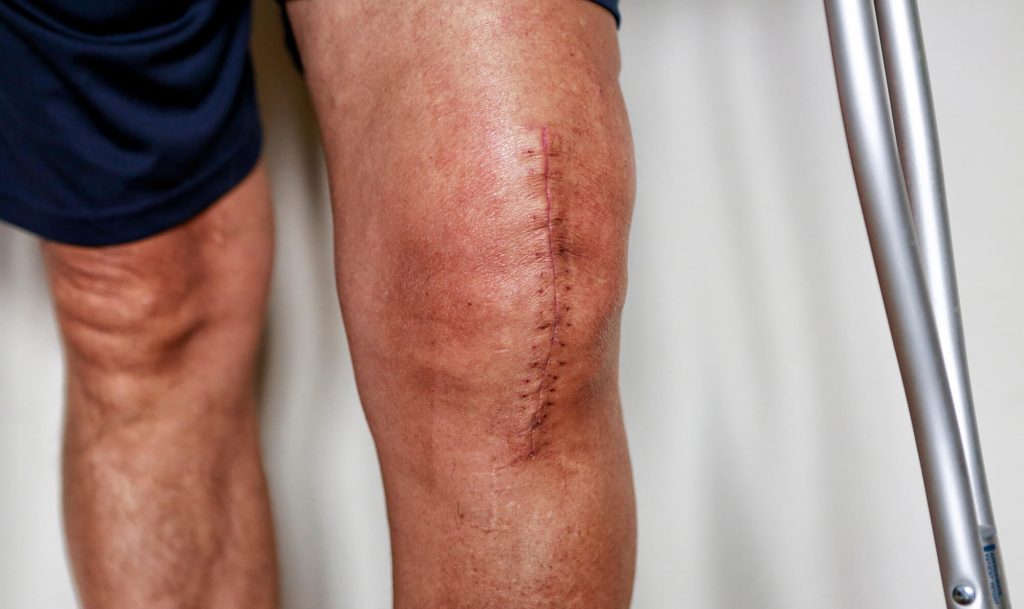If you’ve torn your ACL and you are considering surgery, deciding between an allograft vs autograft can seem stressful and confusing. As a double board certified orthopedic surgeon and sports medicine doctor, I’ve successfully walked thousands of patients through their treatment options when it comes to choosing the best graft for them. Both options can have advantages and disadvantages, and sometimes patients have a preference for one over the other.
When surgery is recommended for a knee injury like a torn ACL, the surgeon will need to repair functioning and restore strength with a graft. Since the healthy tissue in the knee has been damaged, additional tissue is needed to make the repair.
Allograft vs Autograft for Surgery
Tissue that is taken from another person (a donor) is called allograft tissue, whereas tissue that is obtained from your own body is called autograft tissue. While both are extremely safe options, there are certain pros and cons that you and your surgeon will consider when choosing between allograft vs autograft.
Pros and Cons of Allograft
Individuals who choose allograft tissue are sometimes seeking an easier, smoother recovery. It’s true that using allograft tissue can make early recovery less painful for some patients. However, using allograft tissue does not necessarily result in a quicker recovery because it can actually increase the length of recovery time overall.
Because these patients don’t have to have an additional surgery to harvest graft tissue from their own body, patients who select allograft tissue from a donor generally have less postoperative pain. An allograft also eliminates the chance that issues will develop at the tissue harvest site.
It’s worth noting that the vast majority of patients in my practice choose allograft tissue because they want to experience less pain and have a faster recovery from surgery.
Cons of Allograft
Rehabilitation is generally longer when allograft tissue is used, which can be problematic for athletes and other people that need to return to their sport or work environment in a small amount of time.
In addition, since allograft tissue isn’t as strong due to the sterilization process it goes through, many ACL surgeons recommend that professional or semi-professional athletes avoid donor tissue because of higher rates of reinjury to the graft.
Donor tissue from a reputable and reliable tissue bank may not always be available, and the cost is significantly higher than using an autograft.
Many people are also concerned about getting a disease or infection from a donor graft. While the risk of getting an infection from a donor graft is very low (studies suggest between 0.14%-1.7%) many patients prefer to avoid this potential risk by using their own tissue.
Pros and Cons of Autograft
Pros of Autograft
Often thought of as the “gold standard” in bone grafting, one major advantage of using your own tissue is the fact that the tissue doesn’t have to be sterilized and preserved, making it stronger and reducing your chance of reinjury when compared to an allograft.
While there is still a chance of infection at the surgical site, many people feel comfort knowing they have eliminated their concern of getting a disease from donor tissue.
Autograft tissue is the safest and fastest-healing tissue that can be used in an ACL surgery.
Cons of Autograft
Extracting autograft tissue creates the existence of a second surgical site from which the patient must recover and can extend a patient’s time in the hospital and recovery timeline.
The most common graft locations for ACL reconstruction surgery are either of the patella tendon, hamstring tendon, or quadriceps tendon. Depending on where the tissue is harvested from, patients may have pain and/or scarring at the harvest site.
Questions to ask your surgeon about allograft vs autograft
If you are choosing between allograft vs autograft, make sure to discuss the following questions with your orthopedic surgeon:
- Which type of ACL graft does your surgeon prefer/recommend and why?
- How long is the healing/recovery time with each option?
- What are the side effects associated with each option presented?
To summarize, ACL surgery is not a “one size fits all” procedure. While there are advantages and disadvantages to each approach, your surgeon should work with you to determine which course of treatment will yield the best results for you based on the level of injury and your priorities.
ACL tears are a very common knee injury – especially in a sports town like Los Angeles. It’s estimated that between 100,000 and 200,000 ACL-related knee injuries happen every year across the country. If you’re looking for a top orthopedic surgeon and sports medicine doctor to treat your ACL injury and review your allograft vs autograft options, check out our Knee Surgery page, or call our Los Angeles & Van Nuys office to get started.

